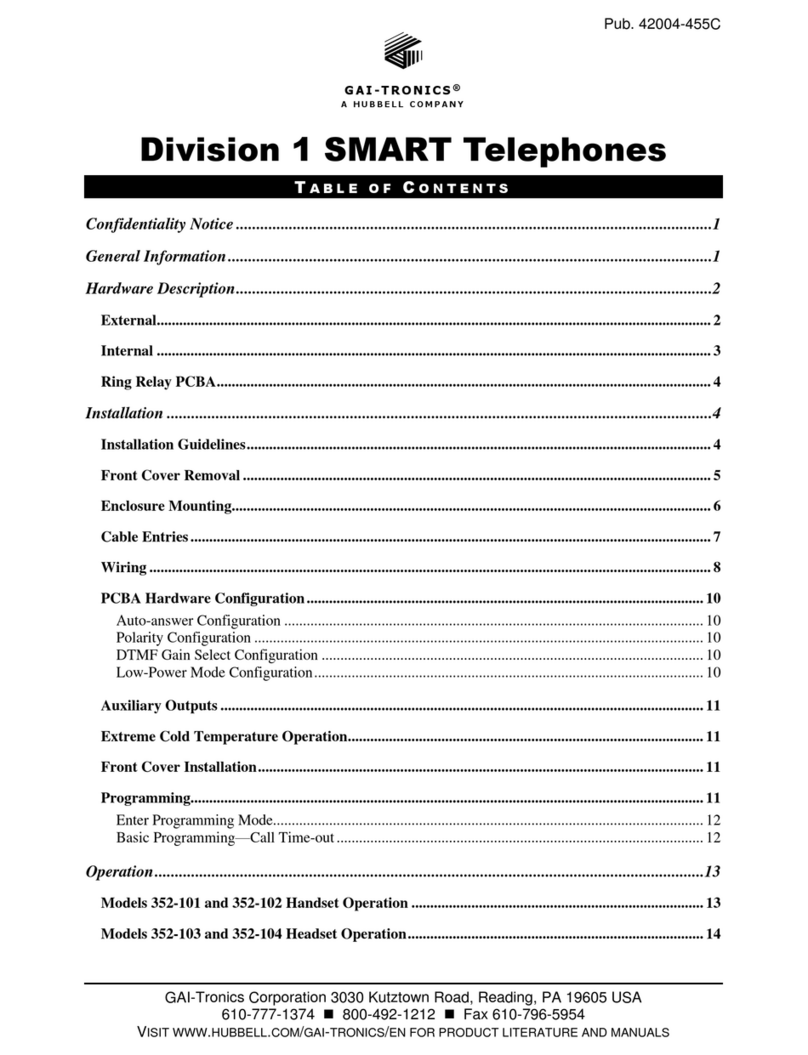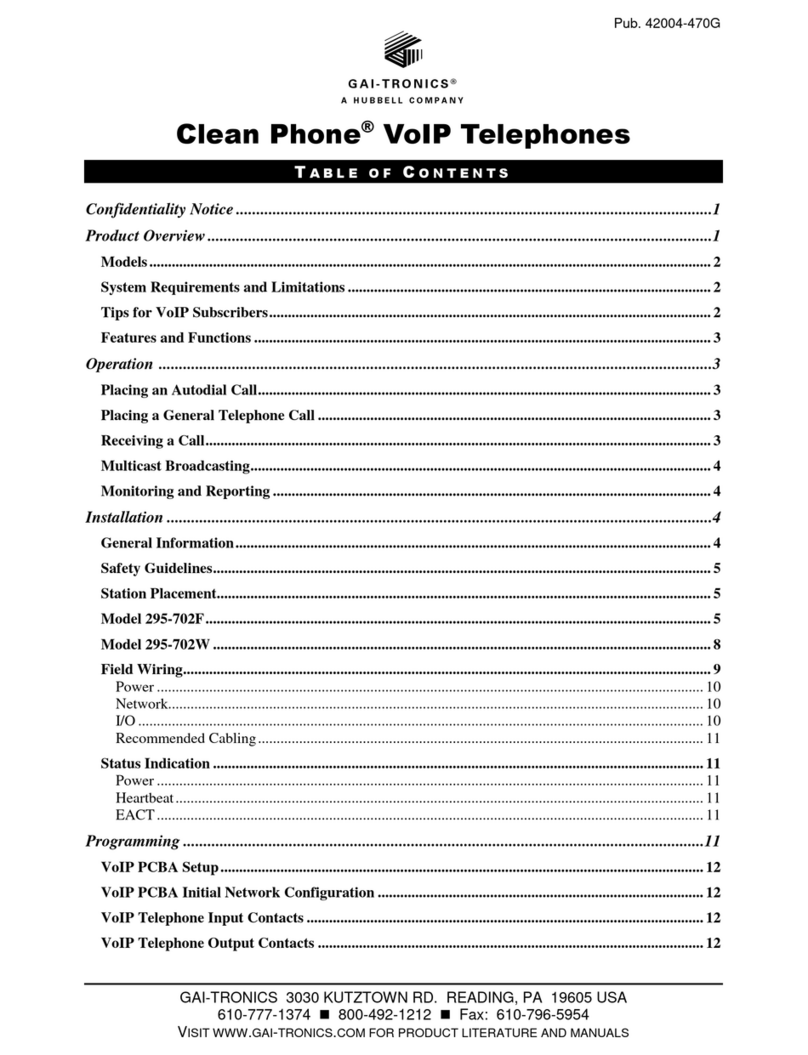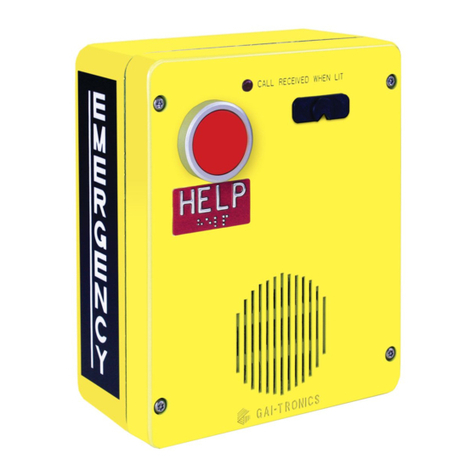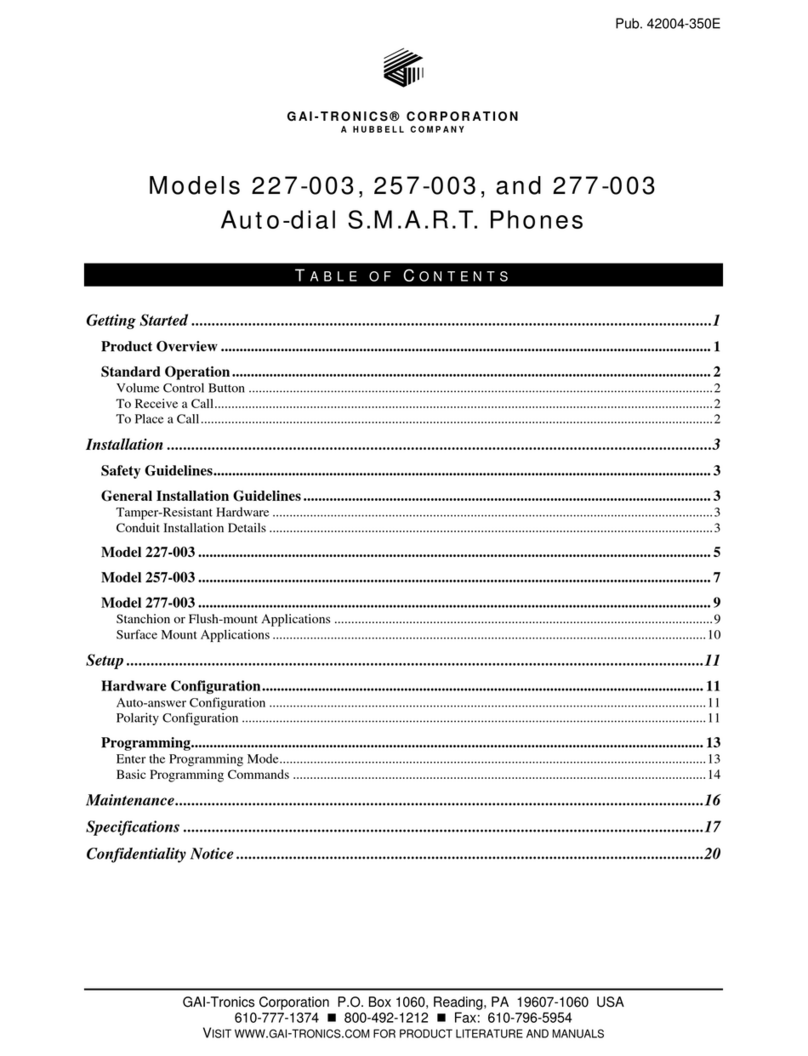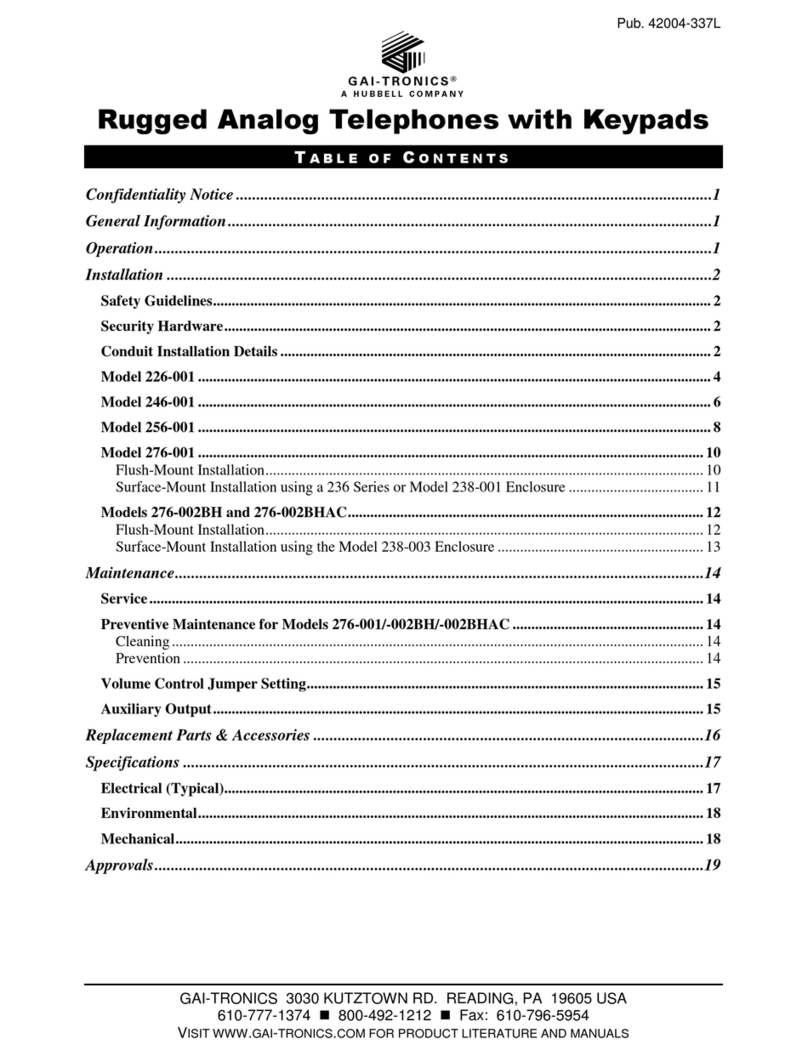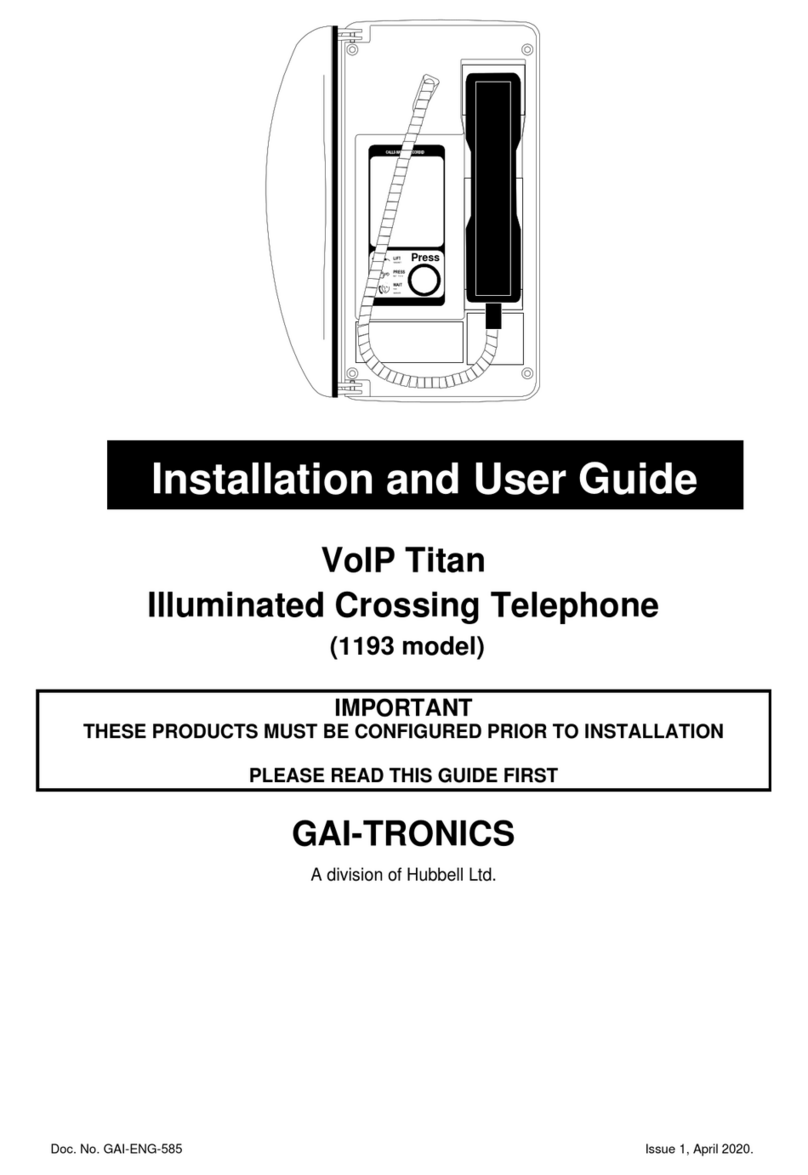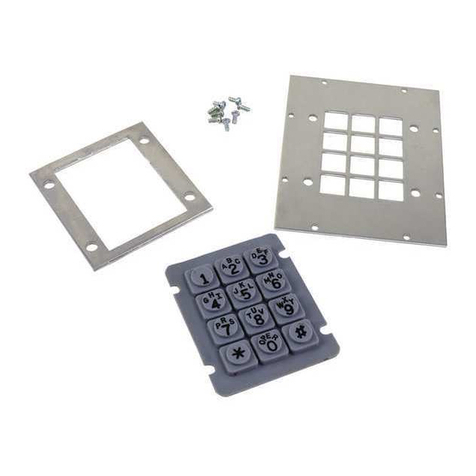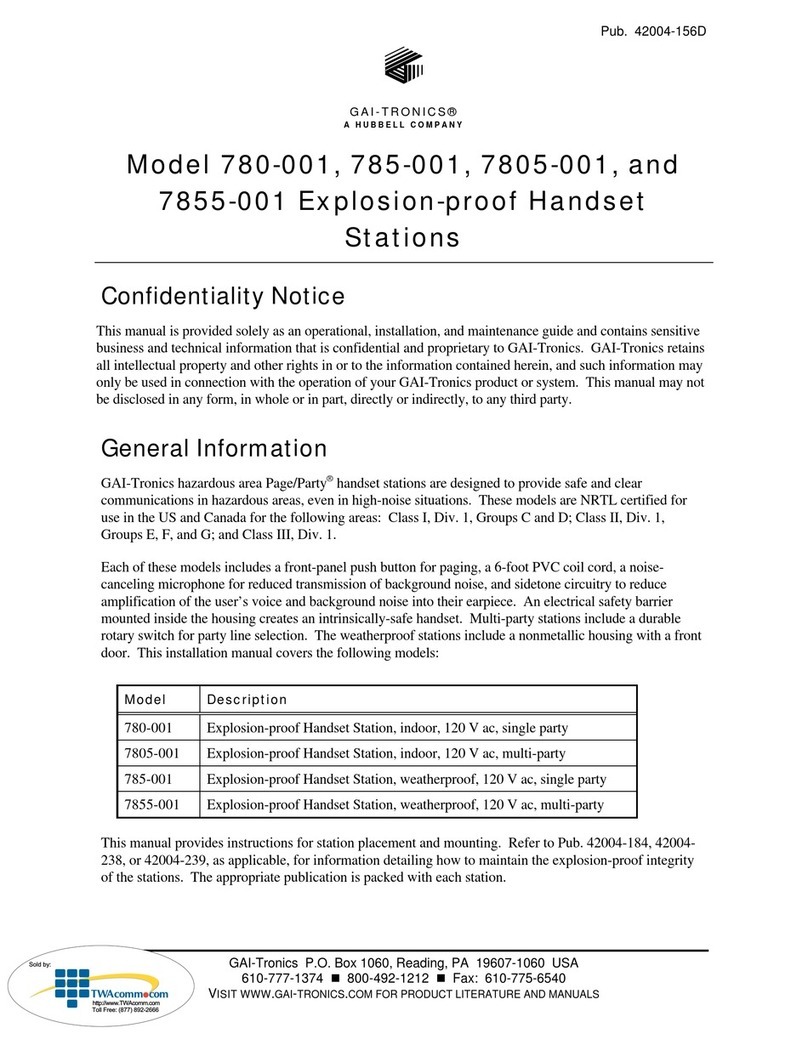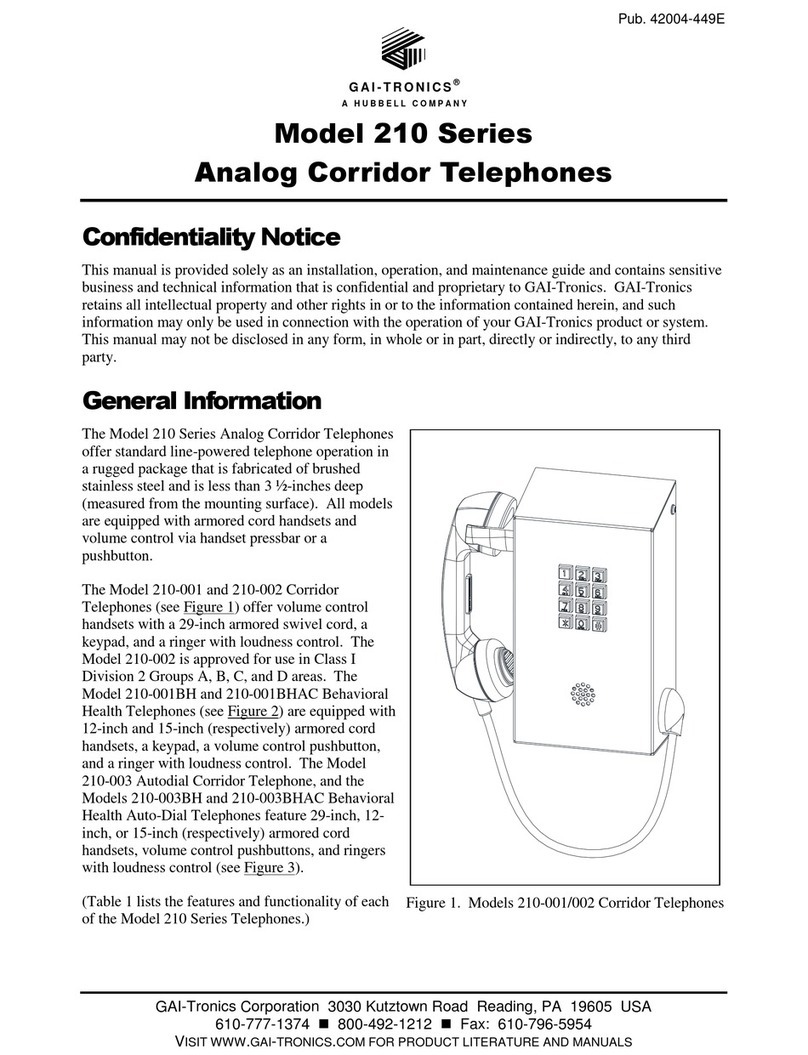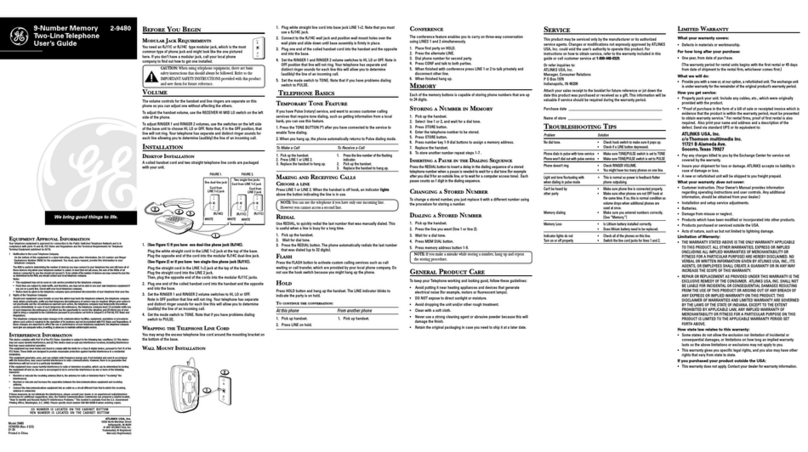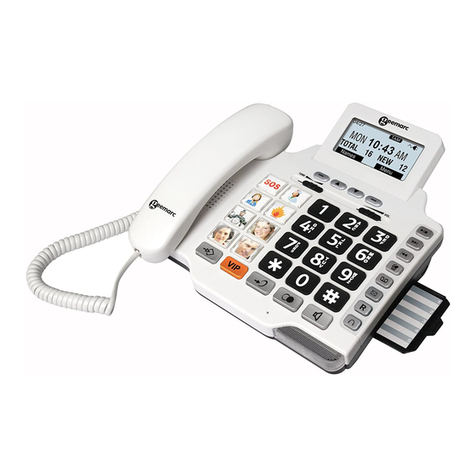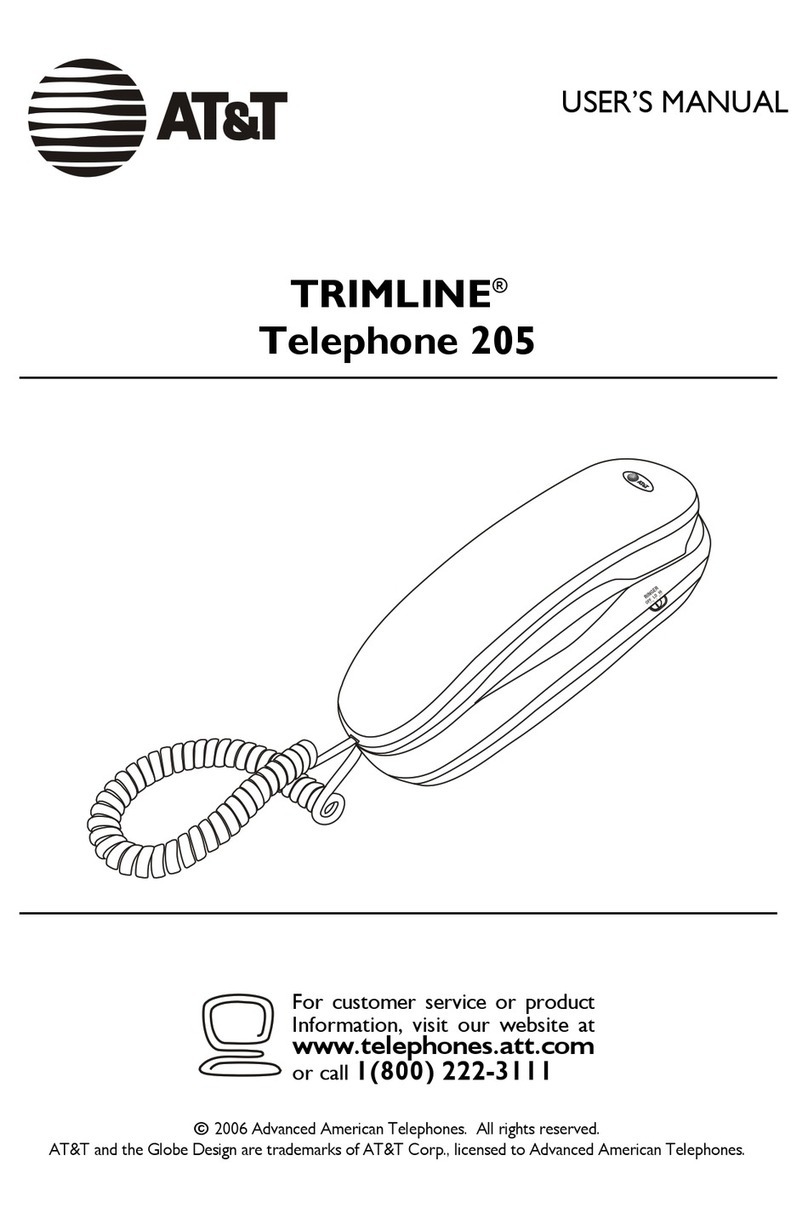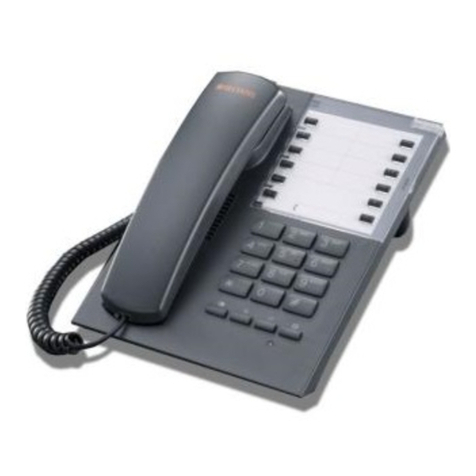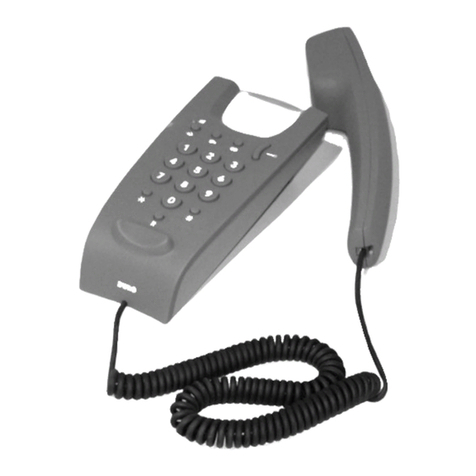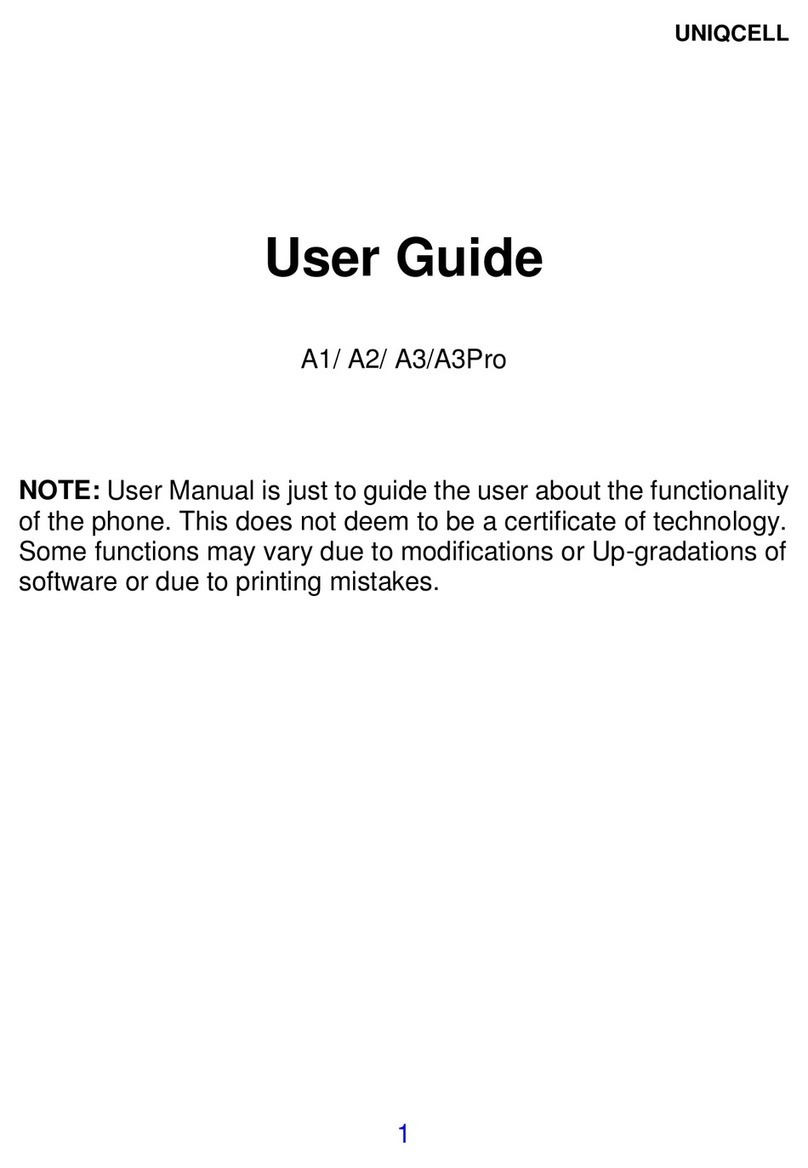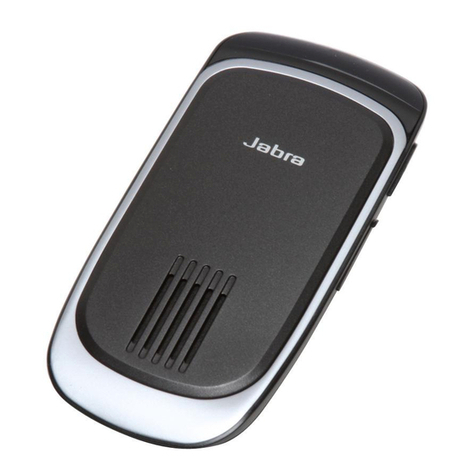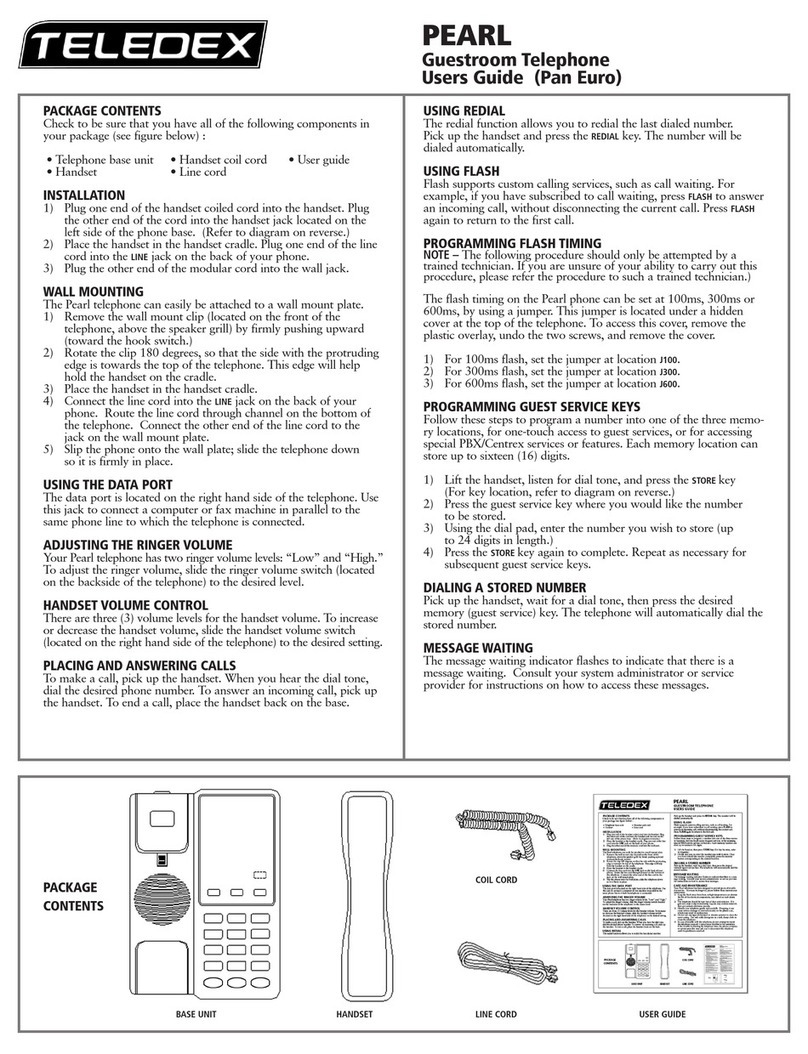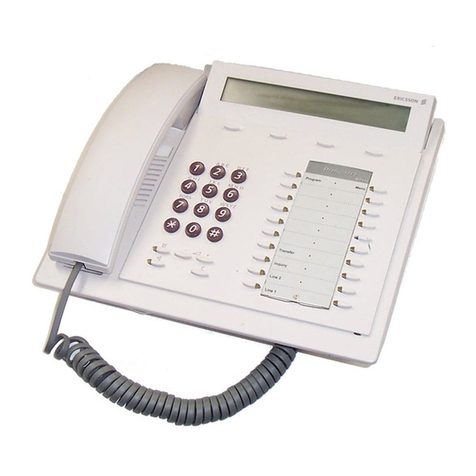
Pub. 42004-338J
G A I - T R O N I C S
®
A H U B B E L L C O M P A N Y
Rugged Analog Auto-Dial Telephones
TA B L E O F CO N T E N T S
GAI-TRONICS 3030 KUTZTOWN RD. READING, PA 19605 USA
610-777-1374 800-492-1212 Fax: 610-796-5954
VISIT WWW.GAI-TRONICS.COM FOR PRODUCT LITERATURE AND MANUALS
Confidentiality Notice.....................................................................................................................1
General Information.......................................................................................................................1
Operation.........................................................................................................................................1
Installation ......................................................................................................................................2
Safety Guidelines.....................................................................................................................................2
Security Hardware..................................................................................................................................2
Conduit Installation Details (Applicable to Models 247-001 and 257-001)........................................2
Model 227-001.........................................................................................................................................4
Model 247-001.........................................................................................................................................6
Model 257-001.........................................................................................................................................8
Model 277-001.......................................................................................................................................10
Flush-Mount Installation.....................................................................................................................10
Surface-Mount Installation using a 236-00x Series or Model 238-001 Enclosure............................. 11
Models 277-001BH and 277-001BHAC...............................................................................................12
Flush-Mount Installation.....................................................................................................................12
Surface-Mount Installation using the No. 238-001FS Enclosure .......................................................13
Programming Auto-Dial Numbers......................................................................................................14
Ringdown Operation ............................................................................................................................14
Maintenance..................................................................................................................................15
Service....................................................................................................................................................15
Preventive Maintenance for Models 277-001/-001BH/-001BHAC...................................................15
Cleaning.............................................................................................................................................. 15
Prevention...........................................................................................................................................15
Volume Control Jumper Setting..........................................................................................................16
Auxiliary Output...................................................................................................................................16
Replacement Parts and Accessories.............................................................................................17
Specifications ................................................................................................................................19
Electrical (Typical)................................................................................................................................19
Environmental.......................................................................................................................................19
Mechanical.............................................................................................................................................19
Model 227-001.......................................................................................................................................19
Models 247-001 and 257-001................................................................................................................19
